September 2022 | Interview with photographer, Jerry Dodrill
Part I: I document the land as an observer who’s deeply connected. My art and the sports in which I participate—climbing, biking, and canoeing—are all part of the same creative pursuit
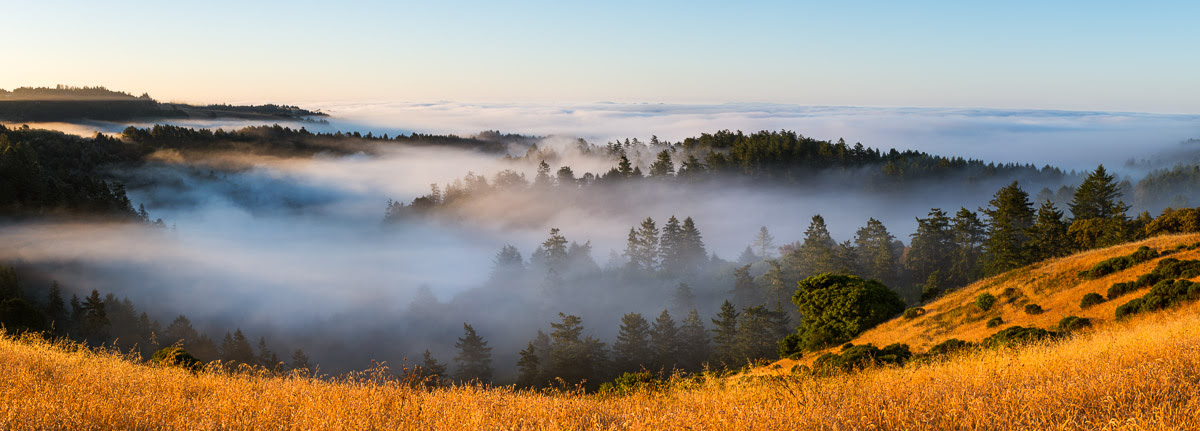
I visited Jerry at his home and studio in the town of Bodega. Entering, I was greeted by old photos of Burmese shadow puppets and other art objects taken by his great aunt who was a missionary in the Far East. Contemporary pieces, such as a beautiful ceramic pot that was also a percussion instrument, dotted the room. Above the former fireplace spread a 90×30-inch panoramic photograph of the redwood and pine forests stretching towards the ocean. Jerry explained that the photo is a composite of eleven vertical frames.
Jerry’s studio includes a hand-built climbing wall that is intrinsic to the mountaineering and environmental parts of his being.
We sat and chatted. Jerry began: I was born in Central California, in the early 1970s. My parents split up when I was three, and while my mom worked on a master’s degree, my sister and I spent a lot of time with our grandparents, who lived in Sacramento. They were very influential in my life and fortunately, loved the Sierra Nevada. Every summer we loaded up their camper and drove “to the hills” to camp at Wrights Lake near the Desolation Wilderness and Lake Tahoe.
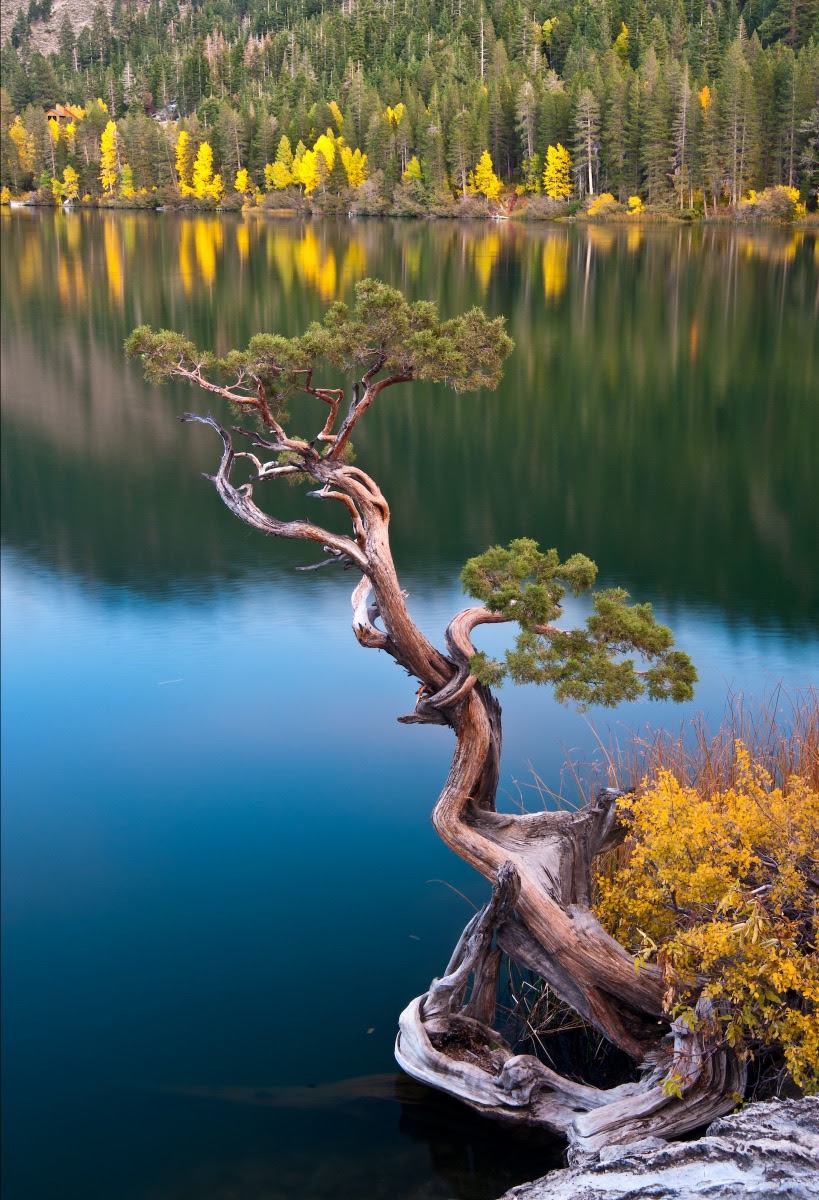
Grandpa had a canoe and in the early mornings, I’d grab my fishing rod, slip the boat into the water by myself, and go fishing on the lake as the sun came up. I remember watching the steam rise off the lake’s surface, the fish jumping, and the glorious reflections of the Crystal Range between the trees. For a young lad, these solo experiences in nature left deep and lasting impressions. Seeing these subtle changes of light and shadow shaped how I look at the landscape and the emotions I feel towards such places now.
When I teach photography, often, I have to tell people to put down their cameras and study the locations and subjects first. Developing personal relationships with your subjects allows you to adequately photograph them.
We moved to Kansas in 1980, and then lived on a ranch in Texas for my elementary to early high school years. I was introduced to rock climbing in 7th grade through our church youth group, and climbing quickly became my religion.
In the spring of 1990, I had a chance to spend five days in Yosemite, and that got me hooked on Sierra granite. It so happened that my mom, sister, and I then moved back to California. With a driver’s license and beat-up truck, I began recruiting classmates as climbing partners for missions to nearby Mt. St. Helena, and longer weekend trips to climb at Tahoe, Sonora, and Bishop. The day after graduating high school (Healdsburg, Sonoma County), I packed all my possessions and moved to Yosemite Valley where I got a job filling Coke Machines and stocking the ice vending machines. Many other kids my age were drawn from around the country to climb in this magical vertical playground. Through the bonds formed by tying into the rope and trusting our lives to one another, we formed a brotherhood that persists even after the harnesses come off and rope is coiled and put away.
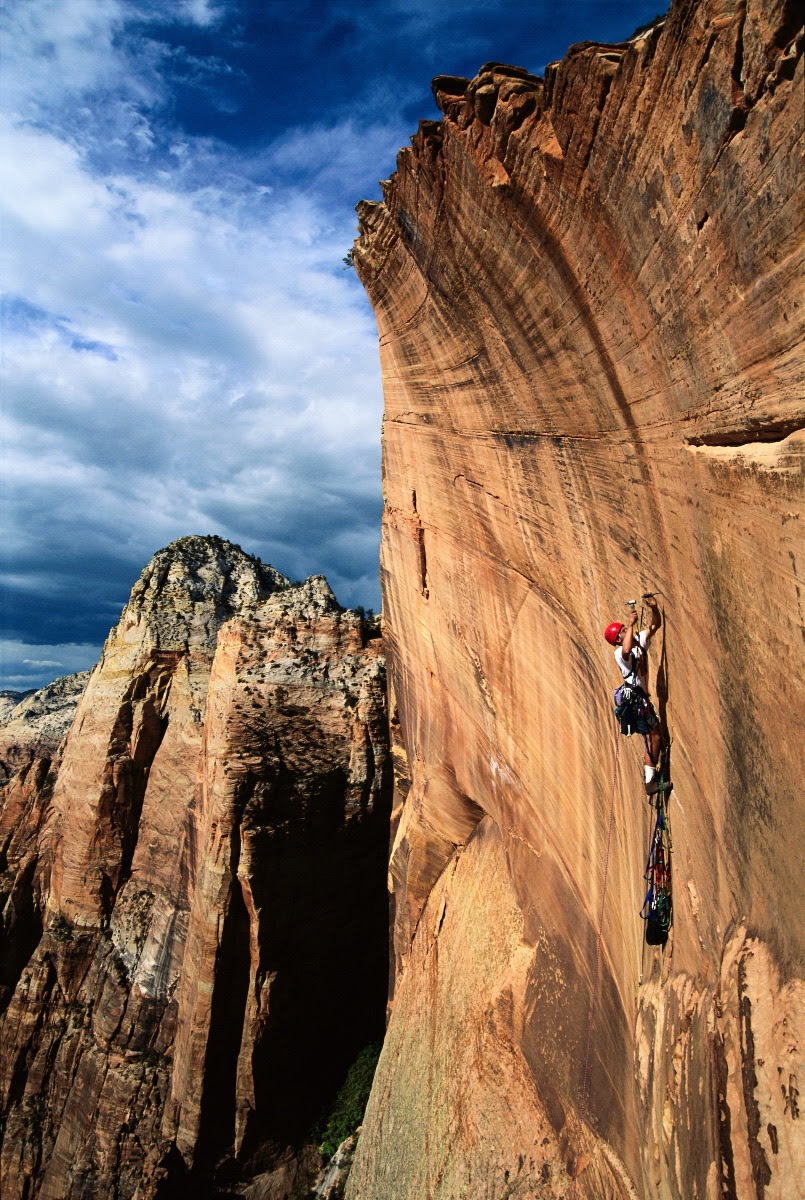
The climbing community is very strong because of our shared experiences in the mountains, the risks we take, and yes, the tragedies we endure. We followed in the footsteps of other adventures who had come like moths to the flame to test ourselves against the laws of gravity and man. Evidence of previous generations was printed in the pages of the books and magazines we devoured. Pictures by legendary photographers Tom Frost, Glen Denny, Galen Rowell, Greg Epperson, and Jim Thornburg created the visual iconography that lit the way for every climber. In time, I would know all these men, even call them friends and mentors.
As summer turned to autumn and then winter, I enrolled at Pacific Union College in Napa Valley where I pursued a bachelor’s in Fine Art. Sculpture, painting, ceramics, graphic design, and art history were the most significant portions of my study, but because I couldn’t stop driving to Yosemite and the Eastern Sierra on weekends, photography became the medium that best suited my lifestyle. It just made sense to bring my camera along in these wild places. Through a creative use of elective credits, I managed to get a minor in photography. Along the way, I was influenced by many artists, but several stand out as significant in my memory:
Mountaineer, conservationist, and photographer Galen Rowell who wrote eleven books including ‘Mountain Light’ and ‘The Art of Adventure.’
The British artist, sculptor, and photographer Andy Goldsworthy was another big influence. His use of line and form was intoxicating to me. I saw his documentary, ‘Rivers and Tides’ in 2001 and I couldn’t sleep that night. The film sent me spinning in many directions. At one point he says, “You only get to know a place by watching it change over a period of time.” That’s how I feel about West Sonoma County where I’ve been living and seriously photographing for 22 years.
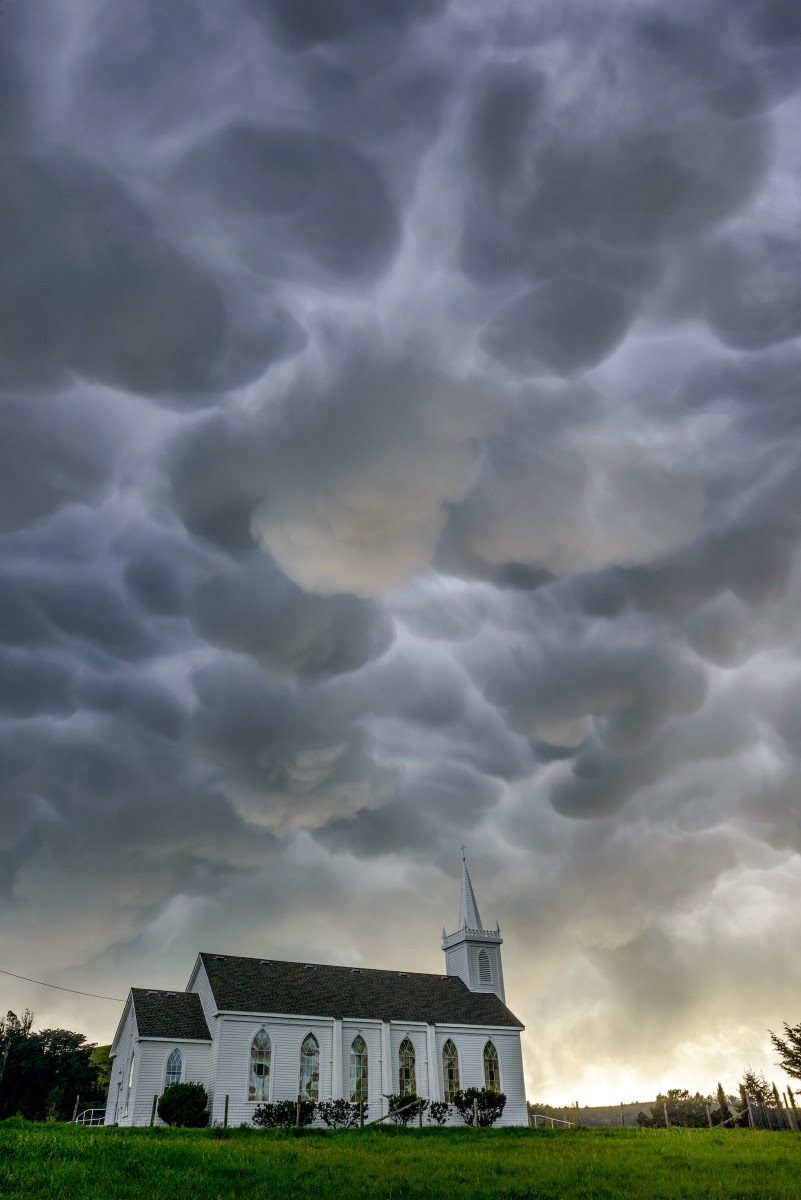
Mammutus clouds form over St. Theresa of Avila Catholic Church during a spring storm in Bodega, California.
In the town of Bodega, wells are going dry earlier than ever. Vineyards creep farther West, sucking up water and depositing fertilizers into Salmon Creek. I’ve yet to see one. We can see the ocean change. For example, in 2002-2003 there were vast kelp beds where now we have bare rocks. Loss of species is accelerating; the bull kelp forests disappearing; ocean life waning—due to the toxification of algae blooms, sometimes known as red tides and acidification; abalone are becoming almost extinct; sea stars wasting disease is occurring, and wildfires are a regular threat.
I document the land as an observer who’s deeply connected. My art and the sports in which I participate—climbing, biking, and canoeing—are all part of the same creative pursuit. The photos are a necessary byproduct of the lifestyle. I see recreation as a gateway to conservation. If you have a population that plays in nature, they will become the warriors who fight for its protection.
While at college, my summer job was as a Forestry Tech, or wildland firefighter working on the Stanislaus Forest Service, between Yosemite and Lake Tahoe. When there were no fires we would run chainsaws all day thinning trees and cleaning up after loggers. We were a crew of ten, and we’d be dropped into areas that had been clearcut some years earlier and where significant new growth had since taken place. The forest needed to be thinned. It was unhealthy back then and has only gotten worse, leading to the massive fuel loads that have recently led to the largest fires in recorded history. I was good at my job, but each time I pressed my saw into the sappy skin of a red or white fir I felt apologetic. My lifelong rehab from that is conservation work, having seen the damage firsthand.
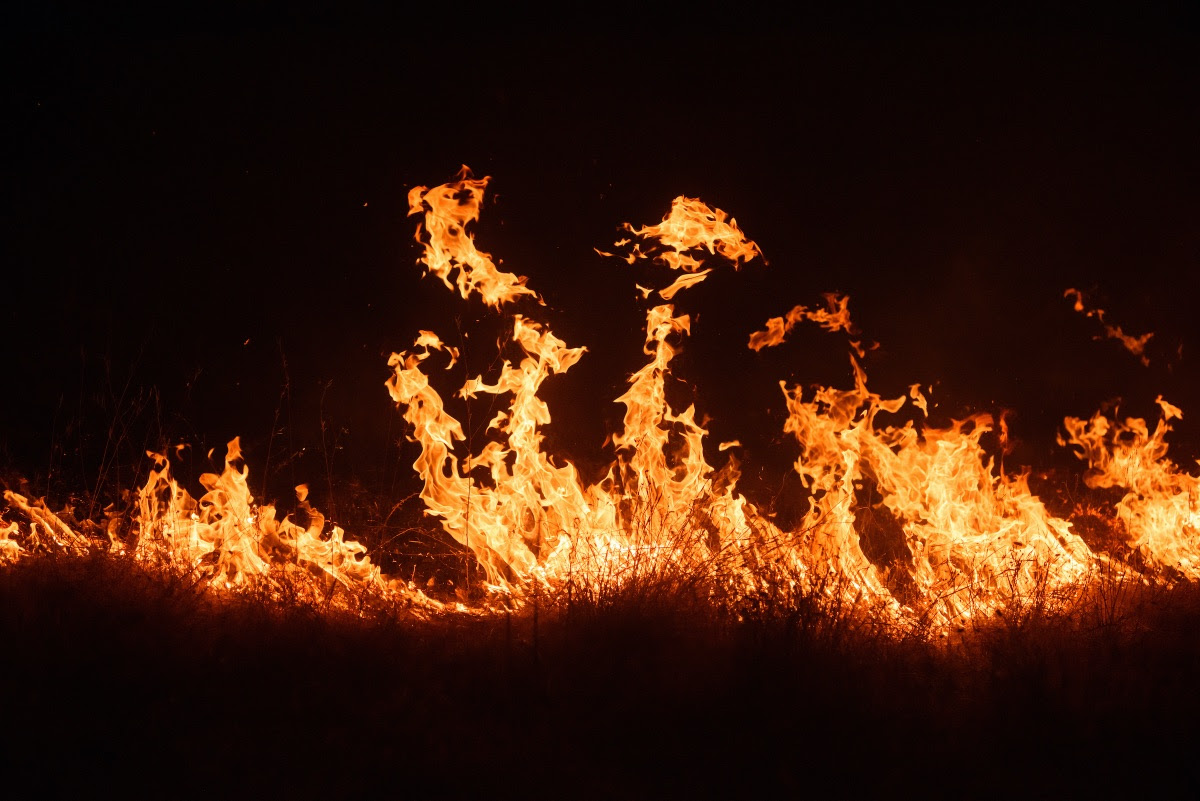
As one of the fire crew, I was offered an apprenticeship in a Forest Service career but had to decide if I was going to pursue that or finish my education. It was a critical moment of decision but when a teammate felled a large tree and nearly killed me, the way was clear. I went back to school. This coincided with winning an international college photo competition where Galen Rowell was the head judge along with aerial photographer Robert Cameron, Andy Grundburger, and Ruth Bernhard. My first show ever was hung alongside Bernhard, Rowell, and Robert Cameron, and the other top contestants at the Mumm Napa Valley Winery’s Ansel Adams Gallery. One door had slammed shut while another had opened.
While at college, all my photos were black and white, hand printed with traditional techniques. On the night of the opening reception in Napa, I met Galen Rowell’s gallery manager, Ryan Baldwin. He looked at my work on the wall and asked if I cut my own mats. “Of course.” Later he hired me as an intern to cut mats and frame prints at Mountain Light gallery in Emeryville, and that was the start of my career.
That same night, Ruth Bernhard, at age ninety and standing at a diminutive 4’10, took my arm and asked to hear about each piece. “Tell me about this one,” she pointed at an 11×14 called “Frost, Naked Ladies.” I told her how it had come to be and she whispered, “You’ve done it! You’ve done it! I just wrote a book about this!” The book, ‘Gift of the Commonplace,’ highlights how anything can become a work of art when light, form, and state of mind come into creative alignment. It was a wonderful private moment, and her simple words gave me the confidence to go forth with my work.
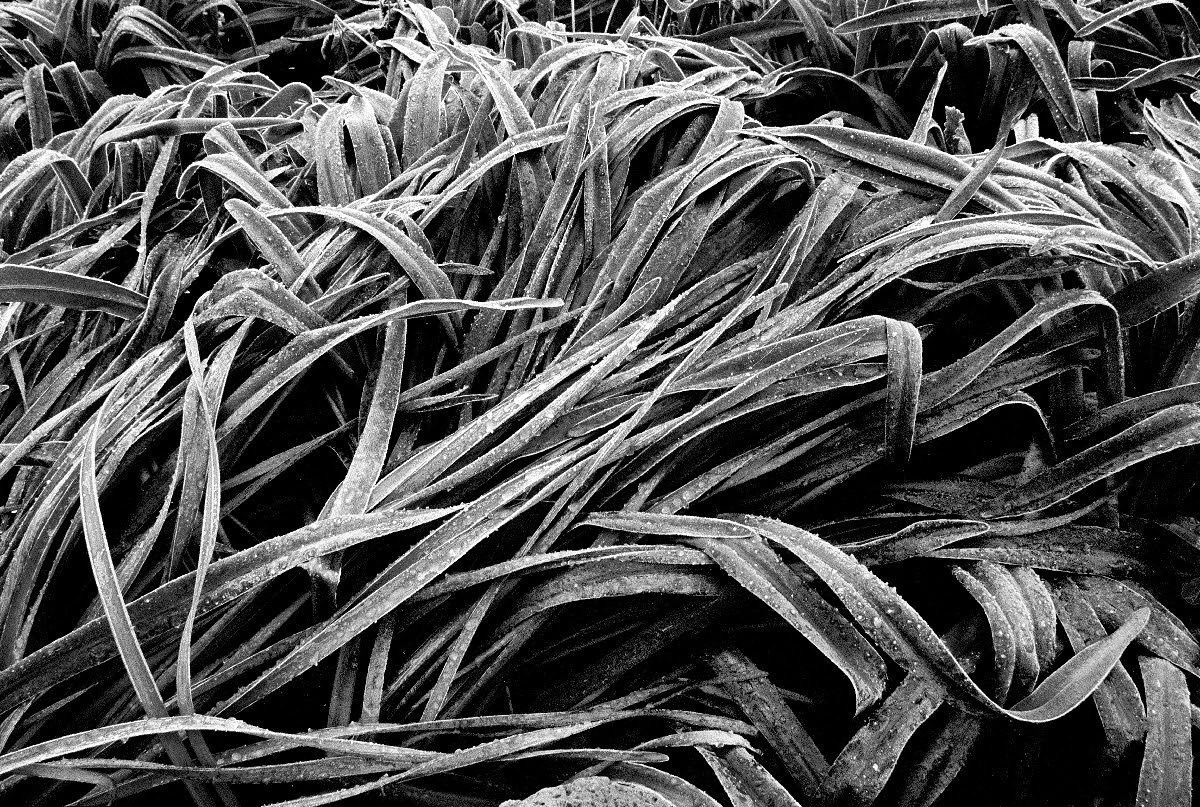
Jerry’s website is brimming with amazing images. Take your time to explore it. It took me quite a while to discover, for instance, that the site includes eight landscape galleries for California alone!
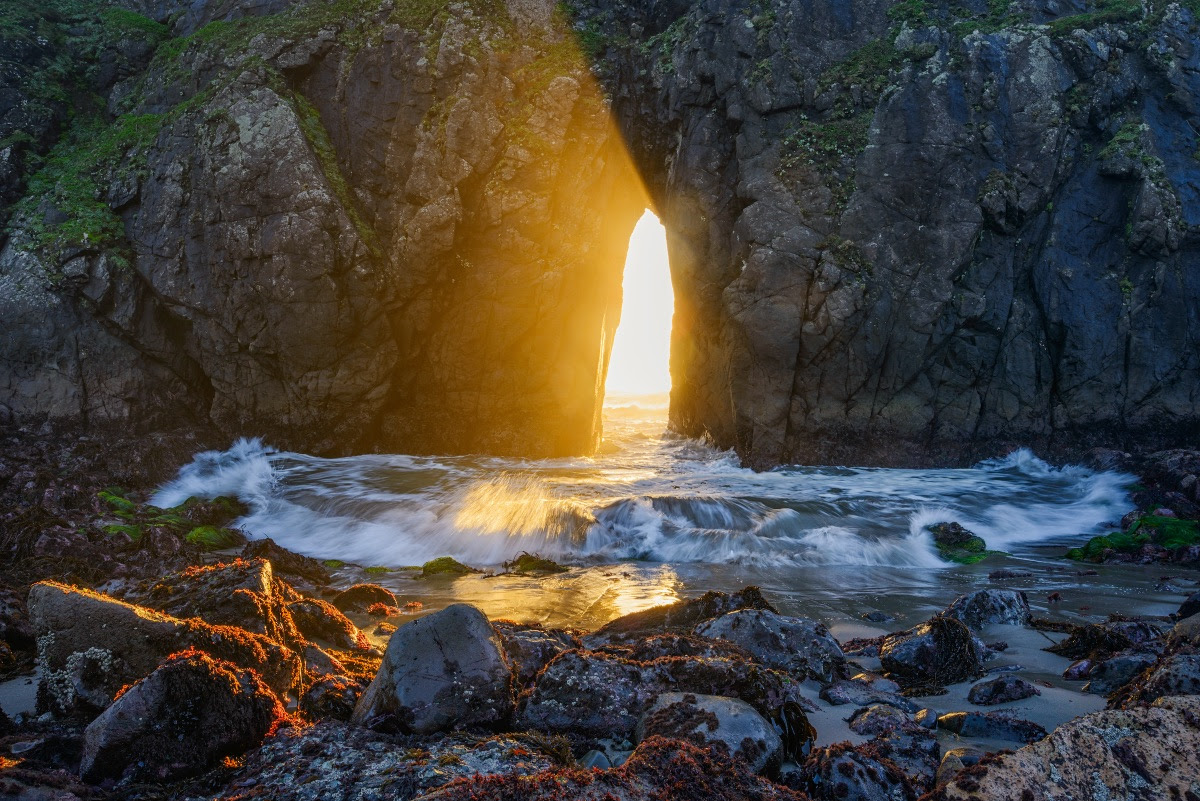
Sunlight shines through a sea arch at Harris Beach on the Southern Oregon Coast near Brookings.
This newsletter will begin its seventh year of life next month. It seems a good time to give voice to some thoughts and feelings about Earth-Love and its purposes.
One of its purposes is to increase our awareness of this being we call Earth or Gaia.
Thousands of years ago people realized that creation begins on the inside. It seems obvious when we see how women carry their unborn young, how seeds need the darkness, dampness, and warmth before emerging, and how so many other species first form eggs from which, once united with masculine elements, the new can come forth.
Carl Jung said (I’m paraphrasing slightly), “Our destiny hangs by a thread, and that thread is our psyche.” Michael Meade gave a wonderful presentation on August 25th, “Recreation and Renewal on Earth”. He relates through story and myth, the vital importance of diving into our own depths to bring into the world the new, whether it be through dream, inspiration, vision, or pain. In the Native American creation story of Sky Woman, all the animals want to help and find a piece of mud at the bottom of the ocean so that Sky Woman can handle and shape it into earth that will grow on turtle’s back, Michael suggests we all have a role in this process; that we are actually vital to this process! Through Greek and Vedic mythology, Michael portrays Gaia as being a much vaster essence than we are perhaps used to envisioning as Mother Earth. This way of relating and conceiving doesn’t require plans or depend on political ideologies or beliefs.
***
I wonder what some of you may have made of Unity Week? In July’s issue, I shared two links: Restoring Right Relationship with the Web of Life with Ben Bowler, Anita Sanchez, Richard Rudd, and Jude Currivan – https://vimeo.com/723933518
I’ve since watched, Protecting and Honoring Water and Natural Sacred Sites – (Look under Day 2.) I love how Ben Bowler introduces with such love one of the panelists, his mom, Joan Bowler. Joan has worked since the ’60s for water and the Aboriginal ways. Linda Tucker tells a remarkable story of her work with the white lions of southern Africa and their significance for the region and their connection to the whole continent. Shelley Ostroff co-hosts, and I’m waiting to hear your impressions of her World Water Law?
All the panelists are sincere, committed, advocates for the Earth. Which of their contributions resonate in your own life? I find they give me hope.
***
It’s so tempting when someone comes along with a technological solution to some of our human behaviors that are having such a destructive effect on so many other beings, plants, animals, minerals, and the great elements of Fire, Water, Air, and Earth. I’ll share just one recent example from a very interesting interview with George Monbiot, author, and environmental activist, on Democracy Now that begins at about 42 min. 30 sec. I cannot help but agree with 99% of what George Montbiot shows so clearly, namely, the fragile current world food distribution network, and the role of the meat industry, alongside fossil fuels, as being so harmful to the planet and our chances of survival. His answer is Precision Fermentation from single-cell organisms, which involves brewing these organisms to produce protein-rich and fat-rich foods. It can be done anywhere. You don’t need fertile land or water. It sounds almost too good to be true! It doesn’t require a change of consciousness, just behaviors, namely our attachment to animal protein and fats.
But here’s the snag, or so it seems to me. During Covid, there was unprecedented international cooperation among scientists and nations, yet how many vaccines reached the less-consuming countries? According to the World Economic Forum (October 2021) under 2% of people living in Africa’s low-income countries had been fully vaccinated, and vaccination rates in many countries were still below 1%. If this is the case in a humanitarian crisis, what are the chances that a new technology run for profit, will make it to where it’s most needed?
***
We are never alone! There are many companions worldwide on this journey. Next month, I’ll share links to two zoom sessions with Joanna Macy and Jonathan Gustin that include tools to guide us through these times with “Active Hope.” Earth, herself, is speaking to each of us every day in ways that we can hear as we give our attention to Her.
I hope you find some nourishment in these monthly newsletters. Thanks so much to all of you who have shared, and to those who, hopefully, will share, your photos, artwork, poems, and reflections.
With love,
Raphael
Judas-tree
Hundreds of bright brown pods,
like flocks roosting on wires,
rustle among round
yellow-veined leaves,
below high woolen clouds
of early fall.
Schoolkids weighed by
backpacks trudge home. Parents
weighted by worries—
their eyes on the concrete.
Do we dare see —
do we dare be—
this stark beauty
all about?
Receive the Earth-Love Newsletter, event invitations, and always a poem.
